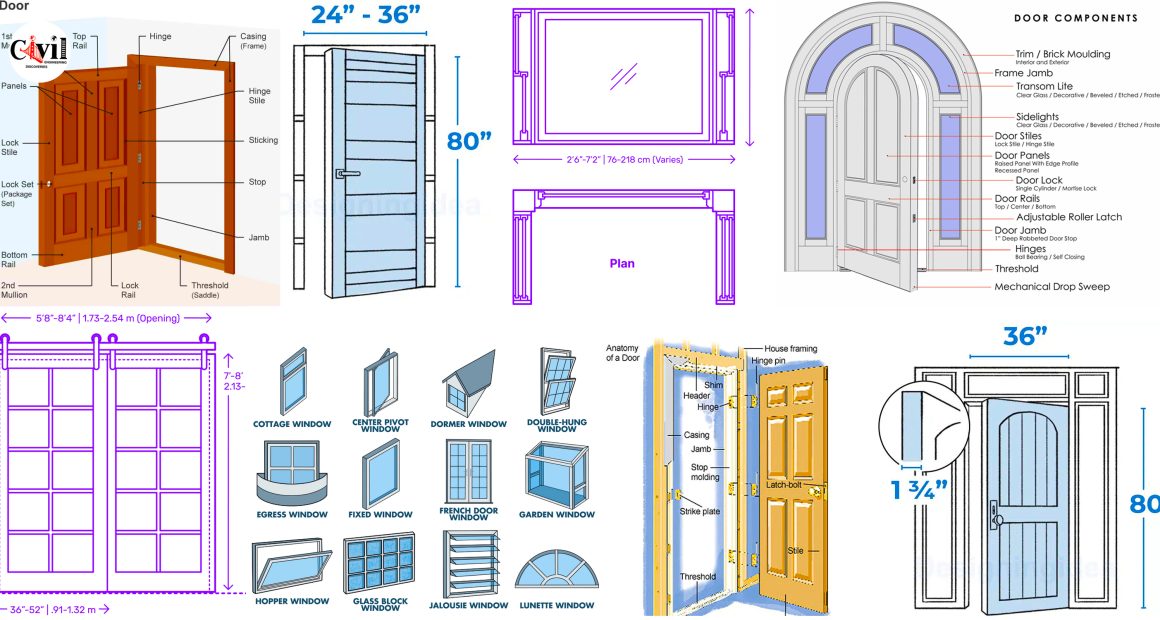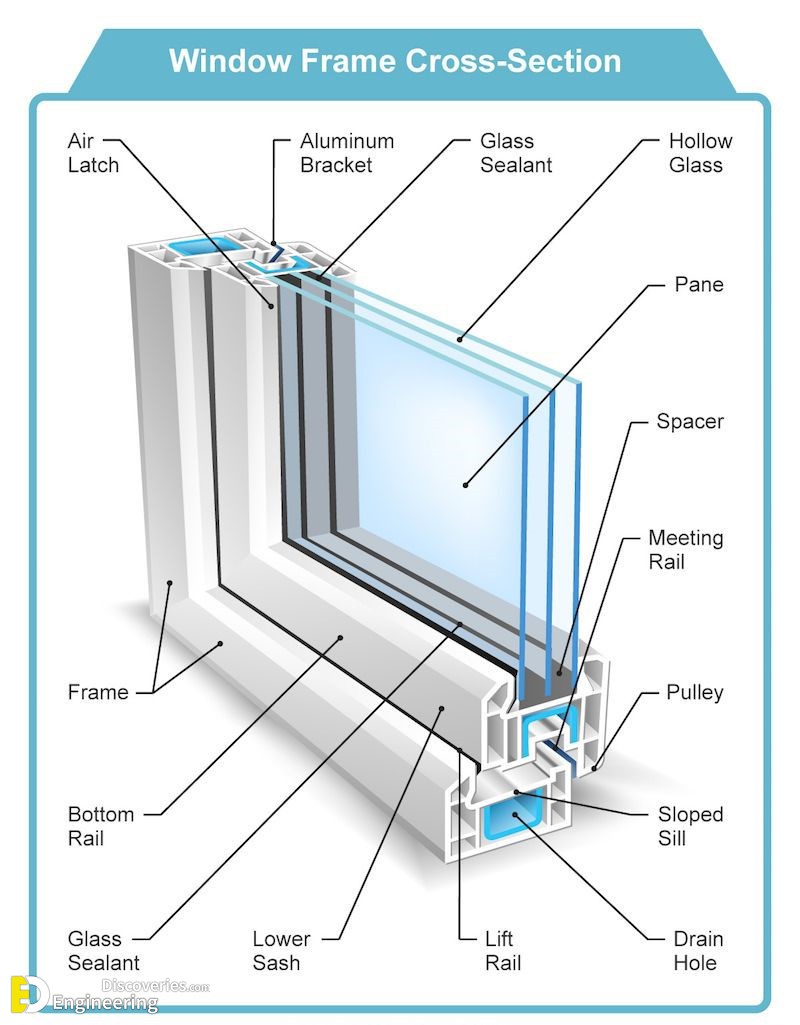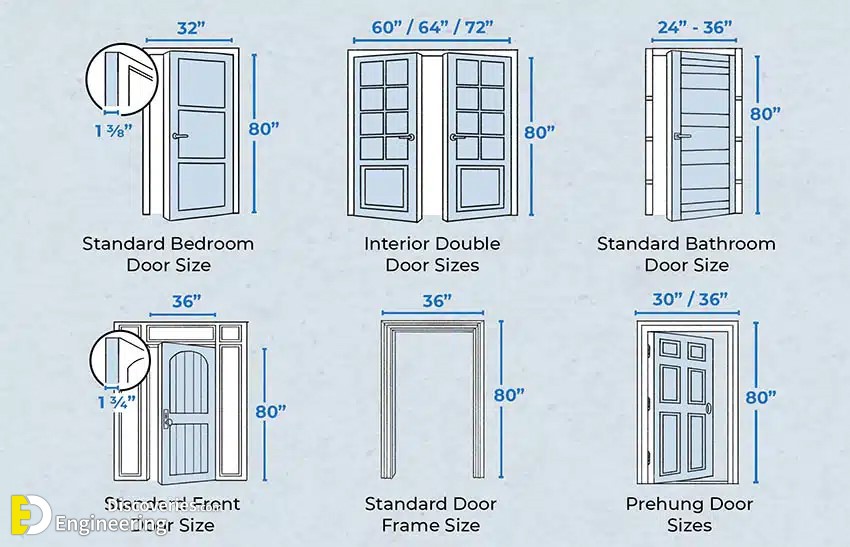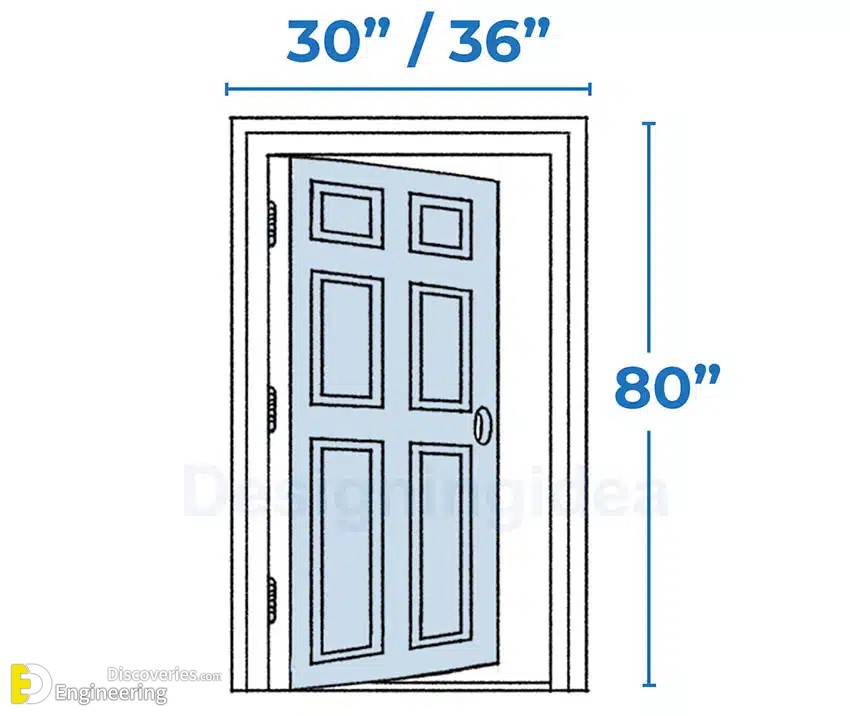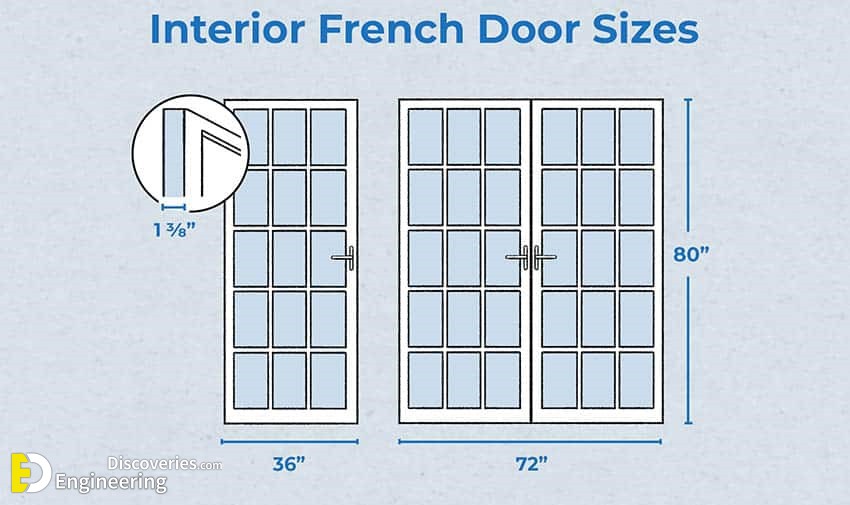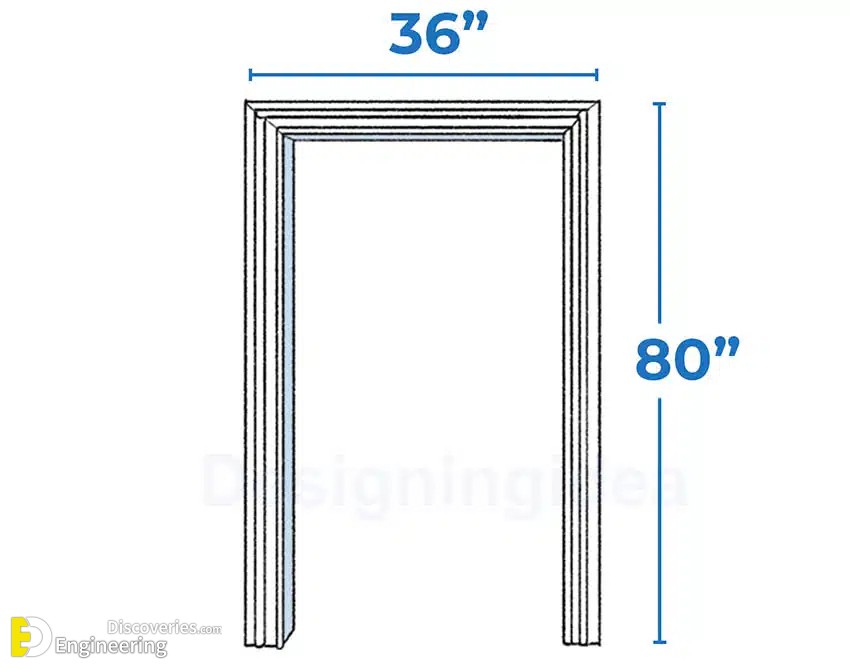- To customize home components, you must know the terminology used in the industry and how window and door parts get into their places.
- Getting the right window and door components involves everything, from size to design, material to security level, etc.
- Doors and window sizes vary from one place to another, so you should choose the most appropriate option.
- While installing new windows, the frame profile is the most obvious thing to look at. It helps to determine the amount of natural light coming into the rooms.
- Standard window sizes for include casing, brickmould, and jamb extensions, and the size of the new brickmould needs to be similar to that of the existing one.
Minimum and Maximum Window Sizes
Now that window profile and factors affecting window sizes are discussed, it’s time to move ahead and look at what the Canadian rules say about their minimum and maximum sizes:
| Type | Width (Max in Inches) | Height (Max in Inches) | Area (Max, Sqft) |
| Single Slider – Double Paned | 78 | 54 | 24 |
| Single Slider – Triple Paned | 78 | 54 | 24 |
| Double Slider – Double Paned | 78 | 54 | 24 |
| Double Slider – Triple Paned | 72 | 48 | 21.66 |
| Single Hung – Double Paned | 49 | 80 | 24 |
| Single Hung – Triple Paned | 45 | 78 | 21.66 |
| Double Hung – Double Paned | 49 | 78 | 24 |
| Double Hung – Triple Paned | 48 | 68 | 21.66 |
| Casement – Double Paned | 38 | 78 | 18.5 |
| Casement – Triple Paned | 36 | 78 | 16.05 |
| Awning – Double Paned | 48 | 60 | 24 |
| Awning – Triple Paned | 50 | 50 | 17.36 |
Here, is worth mentioning that homeowners couldn’t have both maximums at the same time. Their focus should be to maintain maximum square footage with respect to the parameter or else, the windows and doors may not fit properly into the openings.
Minimum and Maximum Legal Window Sizes
| Type | Width (Max in Inches) | Height (Max in Inches) | Area (Max, Sqft) |
| Awning – double | 48 | 50 | 24 |
| Awning – triple | 50 | 50 | 17.36 |
| Double Slider – double | 78 | 54 | 24 |
| Double Slider – triple | 72 | 48 | 21.66 |
| Single Slider – double | 78 | 24 | 54 |
| Single Slider – triple | 78 | 24 | 54 |
| Single Hung – Double | 49 | 80 | 24 |
| Single Hung – triple | 45 | 78 | 21.66 |
| Double Hung – Double | 49 | 78 | 24 |
| Double Hung – triple | 48 | 68 | 21.66 |
| Casement – double | 38 | 78 | 18.5 |
| Casement – triple | 36 | 78 | 16.05 |
With the help of these standard window sizes in Canada, it would be quite easy for homeowners to make appropriate selections. There is no hard and fast rule, it’s just about understanding the legal aspects of replacing windows and doors so that nothing could go wrong in the future.
Standard Door Sizes
Now that important aspects regarding the standard window sizes in Canada are discussed, it’s time to pay attention to the rules for door sizes. Yes, just like windows, there are some instructions for doors as well. And every homeowner has to follow them in order to ensure satisfaction and efficiency.
1. Exterior Doors
According to the specifications, the standard door size in Canada is found to be 6 ft 8 in by 3 ft 96 in. With newer exterior doors, homeowners can also think of having the dimensions measuring 30 and 32 inches in width. There are also doors that are measured at 7 ft and 8ft in height and 24-inch to 42-inch in width.
2. Sliding Glass Doors
When it comes to having plenty of light in the rooms, nothing could be as effective as sliding glass doors. They are quite cost-effective and operate on parallel motion to ensure smoothness and efficiency. The standard door size in Canada is usually 6 ft 8 inches in width and 6 ft in height.
3. Interior Doors
Last but not least, there are interior doors having a standard size of 80-inch in height and 24, 28, 30, 32, and 36-inch in width. As for thickness, it should be 1-3/8 inches.
